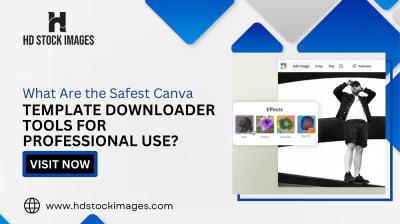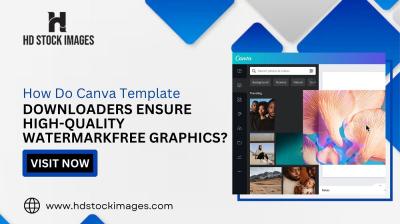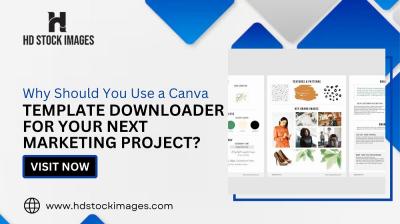Webflow is an easy-to-use platform that allows designers to create beautiful websites without needing to code. One powerful feature Webflow offers is the ability to make images clickable, turning them into interactive elements on your website. This can be useful for a variety of purposes, from creating clickable product images in an online store to linking images to external content or other pages within your site.
In this post, we'll walk through why you might want to make an image clickable, and how to do it step-by-step. By the end, you’ll have a solid understanding of how to enhance your Webflow designs with clickable images.
Why Make an Image Clickable in Webflow?
Clickable images can greatly improve your website’s user experience. When you turn an image into a clickable link, it allows visitors to interact with your site in a more dynamic way. Here are a few reasons why you might want to make an image clickable:
- Better User Experience: It’s an easy way to make navigation more intuitive. Visitors expect images, like product pictures or banners, to lead somewhere. Linking them can save them time and make your website more interactive.
- Increased Engagement: A clickable image can encourage users to explore more content, like articles, product pages, or external websites, keeping them engaged with your site for longer.
- Effective Call to Action: Clickable images can be a great way to emphasize calls to action, such as "Learn More" or "Shop Now," especially for e-commerce websites or marketing campaigns.
- Better Aesthetics: Clickable images can look more polished and professional, especially if they are used for design elements like buttons, galleries, or portfolios.
Also Read This: How to Cut Out an Image in Canva for Stunning Visuals
Steps to Make an Image Clickable in Webflow
Now that you understand why clickable images are useful, let’s dive into the steps for making them clickable in Webflow. You don’t need to write any code to make this work—Webflow has a simple and intuitive interface for this.
Follow these steps:
- Step 1: Select Your Image
First, choose the image you want to make clickable. This can be any image in your Webflow project, whether it's part of a gallery, header, or embedded on a page. - Step 2: Add a Link Block
To wrap your image with a clickable link, use a "Link Block" element. Drag a "Link Block" from the Add panel and place it around your image. This makes the entire image a clickable area. - Step 3: Set the Link Destination
Now, you need to choose where the image will lead when clicked. You can link to another page within your Webflow project, an external URL, or even an anchor point on the same page.- Link to a Page: If you want the image to link to another page on your website, simply select the page from the dropdown.
- Link to an External URL: If you need to send visitors to another website, select “URL” and paste the link in the box.
- Link to an Anchor: For pages with anchors, select the appropriate anchor link to jump to a specific section of the page.
- Step 4: Style Your Link (Optional)
Although Webflow automatically applies styles to link blocks, you might want to customize the look of your clickable image. You can adjust borders, padding, or even add hover effects to make the link stand out more. This is especially important if you want to make the clickable image more visually appealing. - Step 5: Publish Your Changes
Once you’ve set the link, styled the image as needed, and are satisfied with the changes, publish your site to make the image clickable for all visitors.
With just a few simple steps, you can turn any image into a functional and interactive part of your website in Webflow!
Also Read This: how to change pixels of an image
Using the Link Block Element in Webflow
In Webflow, the Link Block element is your go-to tool for making an image clickable. It’s a simple and effective way to turn an image into a clickable link without needing to write any custom code. By wrapping an
Here’s why the Link Block is so useful and how to use it effectively:
- Easy to Use: The Link Block is intuitive and doesn’t require any coding knowledge, making it perfect for beginners and pros alike.
- Flexible: You can wrap any image or other elements inside a Link Block, giving you full control over what’s clickable on your website.
- Responsive: The Link Block element is fully responsive, ensuring that the clickable image works well on all screen sizes, from desktop to mobile.
Follow these steps to use the Link Block element in Webflow:
- Step 1: Drag a "Link Block" from the Add panel to your canvas.
- Step 2: Place your image inside the Link Block. You can do this by dragging the image into the Link Block container or by selecting the image and wrapping it in the Link Block.
- Step 3: Once the image is inside the Link Block, you can proceed to set the destination link for the image.
- Step 4: You can also style the Link Block to adjust the size, position, and any other visual properties to make it look just right.
The Link Block is a simple yet powerful tool for turning any image into a clickable link in Webflow. Whether you’re building a navigation menu, a portfolio, or an e-commerce site, this tool makes it easy to create functional, interactive designs.
Also Read This: how much is adobe stock video
Adding Custom Links to Images in Webflow
One of the best features of Webflow is the ability to add custom links to images. Whether you want to link to another page on your site, an external URL, or an anchor point within the same page, Webflow makes it easy to add these custom links to your images. Custom links give you more control over how users interact with your images, allowing you to direct them exactly where you want them to go.
Here’s how to add custom links to images in Webflow:
- Step 1: Select the image you want to add a link to.
- Step 2: In the settings panel, look for the "Link Settings" section. This is where you can define your link destination.
- Step 3: You can link to:
- Another Page: If you want to link to another page within your Webflow project, simply select the page from the dropdown list.
- External URL: To link to an external website, paste the URL into the provided field.
- Anchor Link: For links within the same page, you can select an anchor point that you’ve previously created on the page.
- Step 4: Once you’ve selected your link destination, you can optionally add a "Target" attribute. This allows you to decide whether the link opens in the same window or a new one. For example, links to external sites should often open in a new tab.
- Step 5: After adding your custom link, make sure to publish your site to see the changes live.
Adding custom links to images in Webflow allows you to control the flow of your website and enhance user experience. Whether you're linking to a product page, a blog post, or an external resource, it’s a simple but powerful feature that can help you create interactive and engaging websites.
Also Read This: Explore If Shutterstock Is Good for Selling Photos
Styling Clickable Images in Webflow
Styling clickable images in Webflow is key to making sure they not only work but also look great. By default, when you add a Link Block around an image, it inherits the styling of your page. However, you can customize the look and feel of clickable images to fit your design perfectly. Whether you want to make them stand out with hover effects or keep them subtle, Webflow provides all the tools you need to style clickable images with ease.
Here’s how to style your clickable images in Webflow:
- Step 1: Style the Link Block
The Link Block itself can be styled to control the layout and positioning of the image. For example, you can adjust its padding, margins, or alignment. By styling the Link Block, you can influence how the clickable image fits into the overall design of your site. - Step 2: Style the Image
You can also directly style the image inside the Link Block. This includes adjusting the image’s width, height, and borders. You can also apply filters or effects, like blur or grayscale, to make the image more visually appealing. - Step 3: Add Hover Effects
Hover effects can make your clickable image more interactive and engaging. For example, you can create a hover effect that changes the image’s opacity, adds a border, or changes the image’s color. This gives users feedback when they hover over the image, indicating that it’s clickable. - Step 4: Apply Transitions for Smooth Animations
To make the hover effects smooth, you can apply transitions. For example, you can set a transition for the opacity so that it changes smoothly when a user hovers over the image. This adds a professional touch to your website. - Step 5: Test on Different Devices
Don’t forget to test how your styled clickable images look on different screen sizes. Webflow offers responsive design tools, allowing you to adjust styles for mobile, tablet, and desktop views to ensure the clickable image looks great on all devices.
Styling clickable images can help them fit seamlessly into your website's design while also improving usability. Whether you want to add subtle effects or bold hover animations, Webflow’s visual editor makes it easy to make clickable images look just the way you want.
Also Read This: Selecting Multiple Images in Lightroom Efficiently
Common Issues When Making Images Clickable in Webflow
While making images clickable in Webflow is usually a straightforward process, there are a few common issues that might arise. Understanding these challenges can save you time and frustration as you build your site. Here are some of the typical problems and how to solve them:
- Image Not Linking Properly: One of the most common issues is when clicking an image doesn’t take the user to the expected destination. This usually happens when the Link Block isn’t set correctly or the URL is broken. Always double-check your link settings and make sure the link destination is valid and properly entered.
- Link Block Size Not Correct: Sometimes, the Link Block around the image doesn’t fully cover the image, which can cause the clickable area to be too small. To fix this, ensure that the Link Block is the same size as the image, or use padding to adjust its size to make the entire image clickable.
- Image Not Responsive: If your clickable image doesn’t resize properly on mobile or tablet devices, it might be due to the way the image is styled. Make sure the image is set to 100% width (or uses flexbox/grid for responsive layouts) and check the Link Block settings to ensure it’s responsive as well.
- Hover Effects Not Working: If your hover effects are not showing up, it could be because of conflicting styles or missing transition settings. Review the hover styles you’ve applied and ensure you have transitions set for a smooth change when the user hovers over the image.
- Overlapping Elements: If other elements are positioned over your image, they may block users from clicking on it. To resolve this, check the z-index of your elements and make sure the Link Block is placed on top of other elements that could interfere with the clickability of the image.
By being aware of these common issues, you can troubleshoot problems quickly and ensure that your clickable images work as intended on all devices.
Also Read This: Understanding YouTube Video Processing Time and Its Variability
FAQ
Here are some frequently asked questions about making images clickable in Webflow:
- Q: Can I make any image clickable in Webflow?
Yes! As long as the image is placed inside a Link Block, it can be made clickable, linking to pages, external URLs, or anchors. - Q: Do I need to add any code to make an image clickable?
No, Webflow allows you to create clickable images without writing any code. The Link Block and Image elements in Webflow are all you need. - Q: How do I make a clickable image open in a new tab?
In the Link Settings, you can select the "Open in New Tab" option. This is useful for linking to external websites or resources. - Q: What is the difference between a Link Block and a simple Image Link?
A Link Block is a container that you can place multiple elements in, while an Image Link only allows the image to be linked. Link Blocks are more flexible, allowing you to add other elements like text or buttons along with the image. - Q: Can I add hover effects to clickable images?
Yes! You can add hover effects like opacity changes, scaling, or border adjustments to make the clickable image more interactive. Use Webflow’s built-in interactions and transitions to customize the hover behavior.
Conclusion
Making images clickable in Webflow is a simple but powerful way to enhance your website's user experience. By using the Link Block element, adding custom links, and styling your images, you can create an interactive, polished design that encourages user engagement. While there may be some common issues to troubleshoot along the way, with a little practice, you'll be able to resolve them quickly and ensure your clickable images function smoothly across all devices.
Whether you’re building a product page, a portfolio, or a blog, clickable images are a great way to make your website more dynamic and easy to navigate. Don’t be afraid to experiment with different link destinations and hover effects to make your clickable images stand out!

 admin
admin








